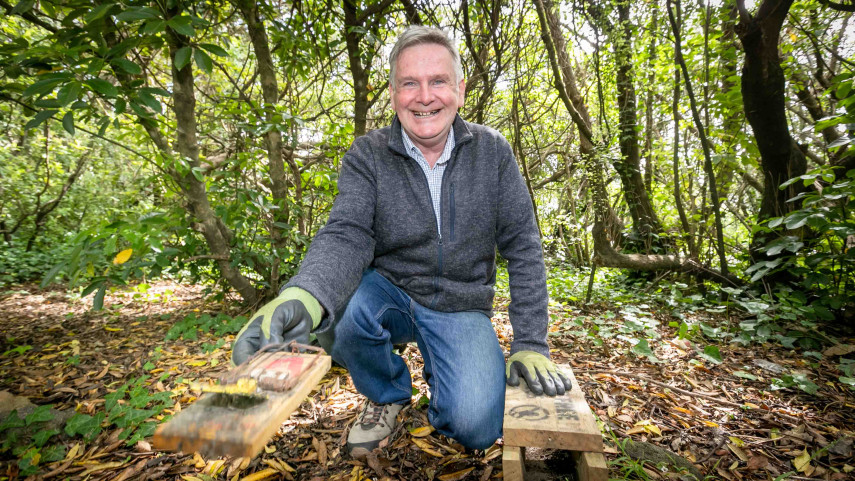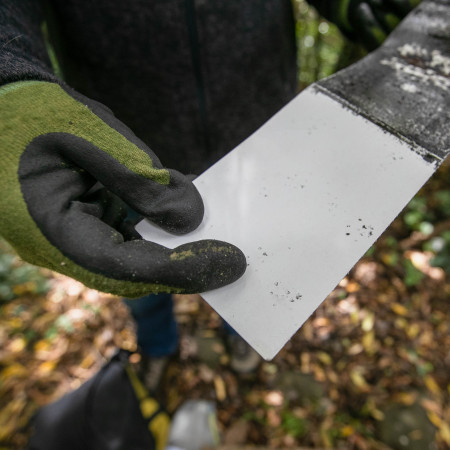
Volunteer trapper helping protect our wildlife

Share this story
Every Tuesday you’ll find Quentin McDonald doing his weekly trap check in Cashmere’s Cracroft Reserve, next to the Sign of the Takehe.
A retired chemist, Quentin lives in nearby Hackthorne Road and he’s been doing this volunteer work for the past four years, after his son’s scout den in Cashmere started getting “eaten alive” by rats gnawing through everything they could find, including books.
After contacting Predator Free Port Hills and making a formal arrangement with Christchurch City Council rangers he set up and started monitoring eleven traps placed around the reserve.
“The scouts assembled those original wooden boxes and placed them as a map-reading exercise,” says Quentin.
“I’ve caught 160 rats over four years and 80 of those were in the first year, 2019. They’ve nearly all been ship rats which you can tell if you fold the tail over the body and the tail's longer.”
He uses American-made Victor traps and places them inside the wooden boxes. Catches are recorded on graphs which show rats are far and away the most common predator, along with a few mice, a very occasional hedgehog and one or two stoats.

Using an ink card to track animal footprints is another way of monitoring the rat population in Cracroft Reserve.
It’s the winter months that see the biggest spike in catch numbers as there’s less natural food available so they come in closer to where humans live.
Perhaps due to his scientific background, Quentin enjoys recording the data and experiments with different types of food and trap placement.
“They love the trees, it’s like a highway for them in here. They like drains and damp areas as well; I try and choose places that ‘feel ratty.’ I do move the traps but not very far because they don’t have a big range, it’s generally only around 50m.”
Because rats are known to be or become shy of the boxes, at times he places ink cards nearby which creatures walk over, leaving their foot prints on the un-inked part of the card. "It’s another way of monitoring the population."
For bait Quentin has traditionally used walnuts and Nutella, as rats are thought to have a sweet tooth but he's currently trialling a ceramic bait to see if that is more attractive.
Quentin is one of hundreds of people across Christchurch and Banks Peninsula who are helping to reduce the population of predators through backyard and community trapping. Their work is helping to protect our native bird species and our skinks, beetles and rare invertebrates.
“It feels like you’re part of a movement, something bigger than yourself,” says Quentin. “I do feel sad every time; they’re beautiful animals, they’re well adapted but they don’t belong in this environment and we brought them here so we’ve got to deal with it. There’s no joy – but there’s a certain satisfaction in knowing we’re going in the right direction.”
For more information about backyard trapping visit the Predator Free Port Hills website.
